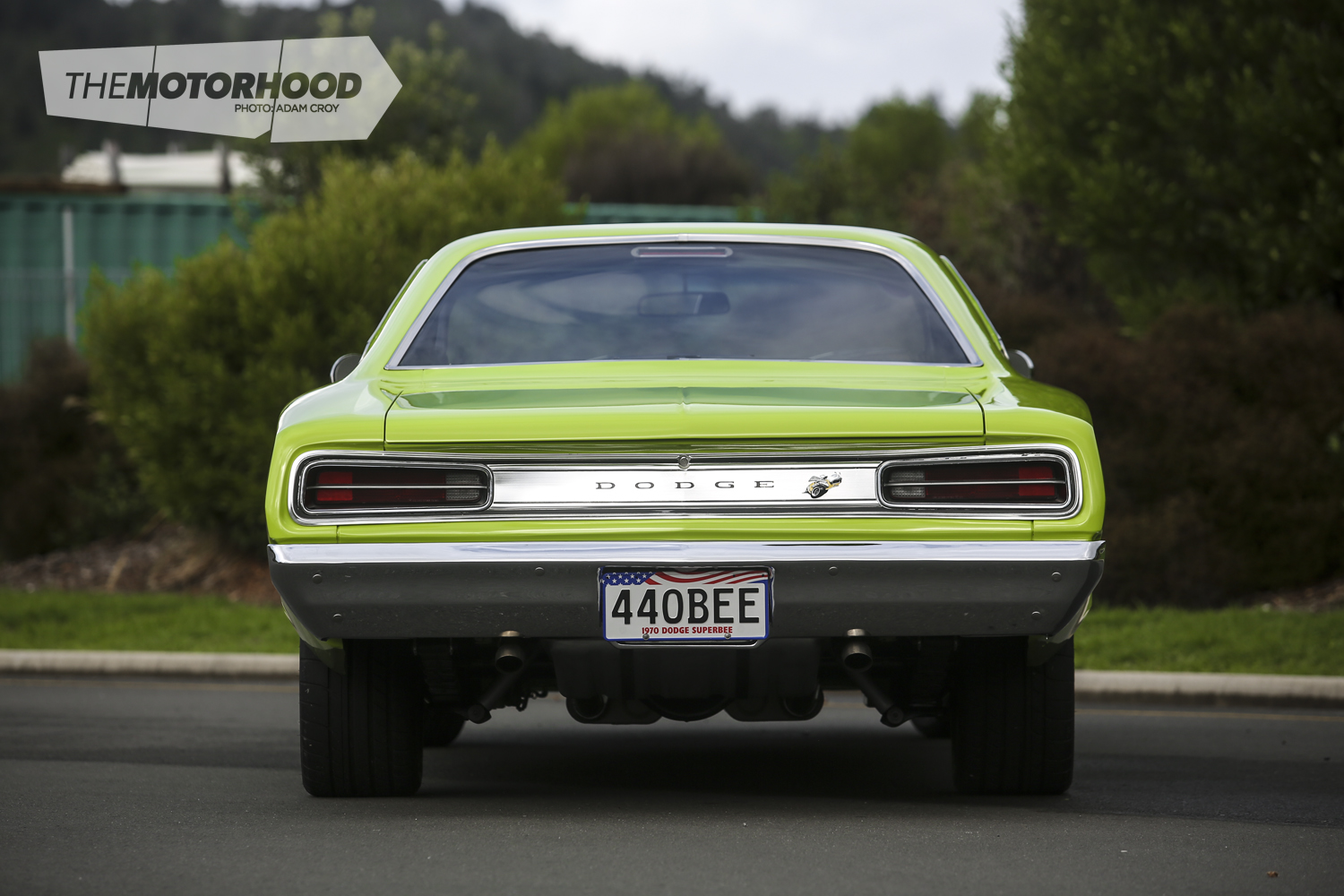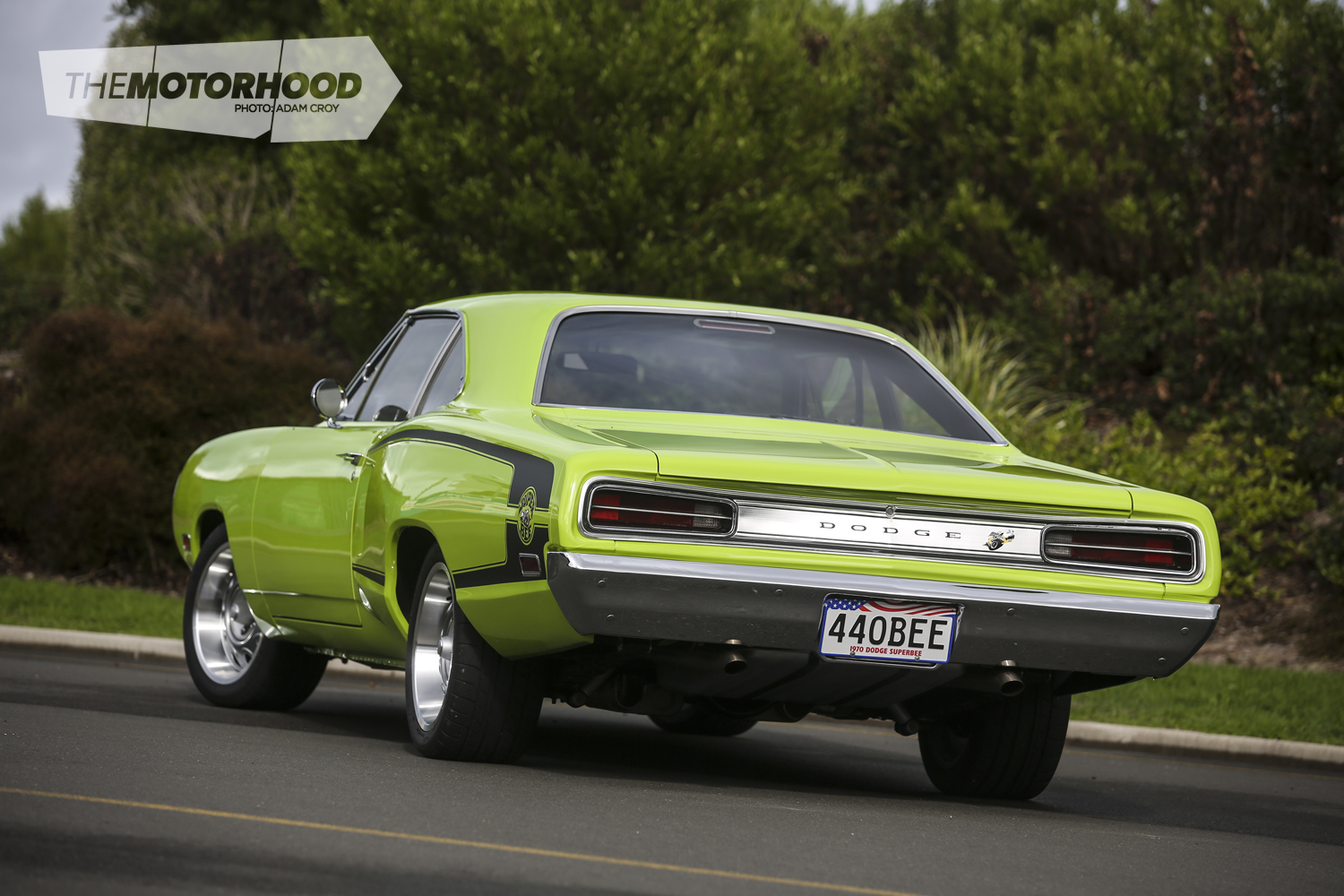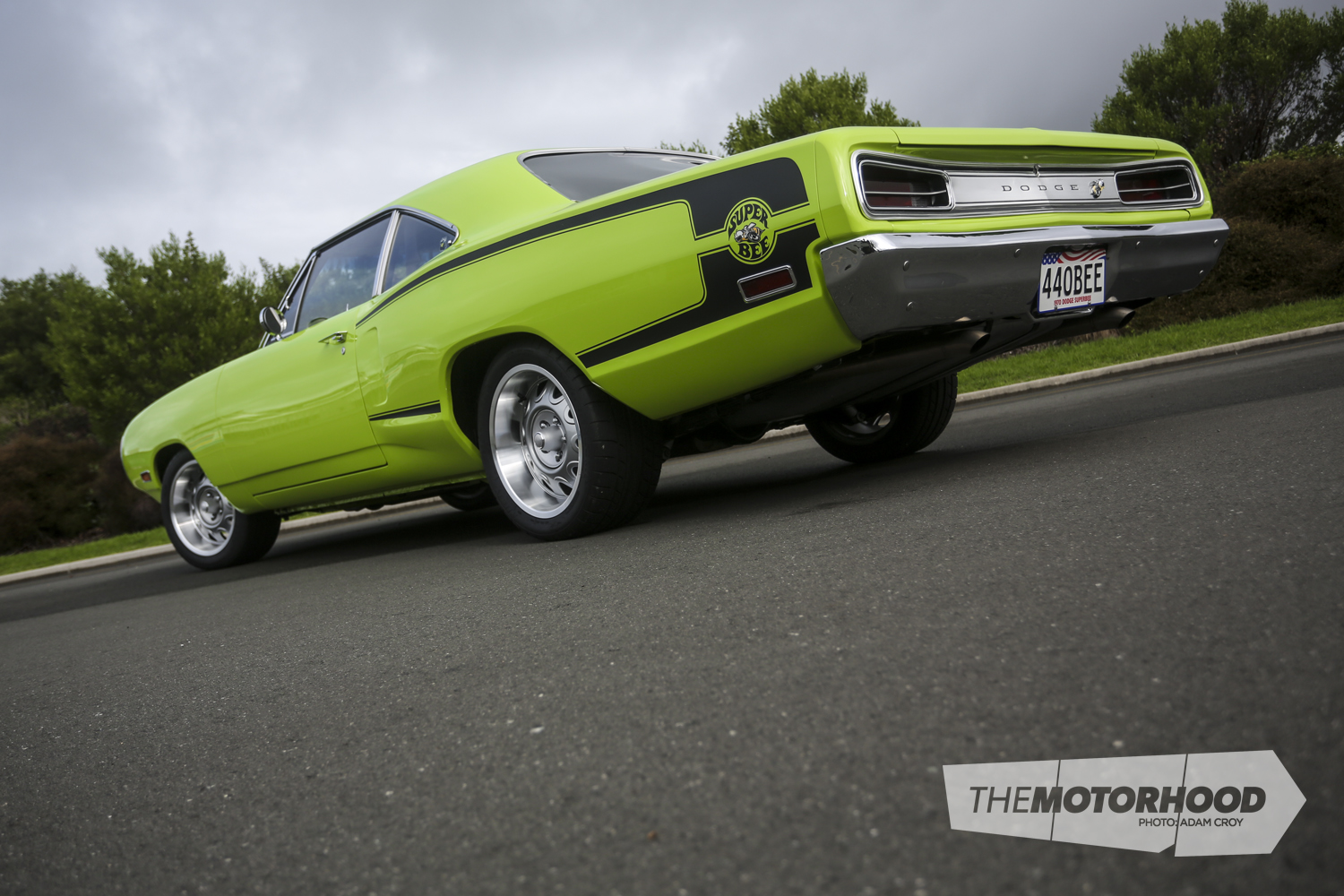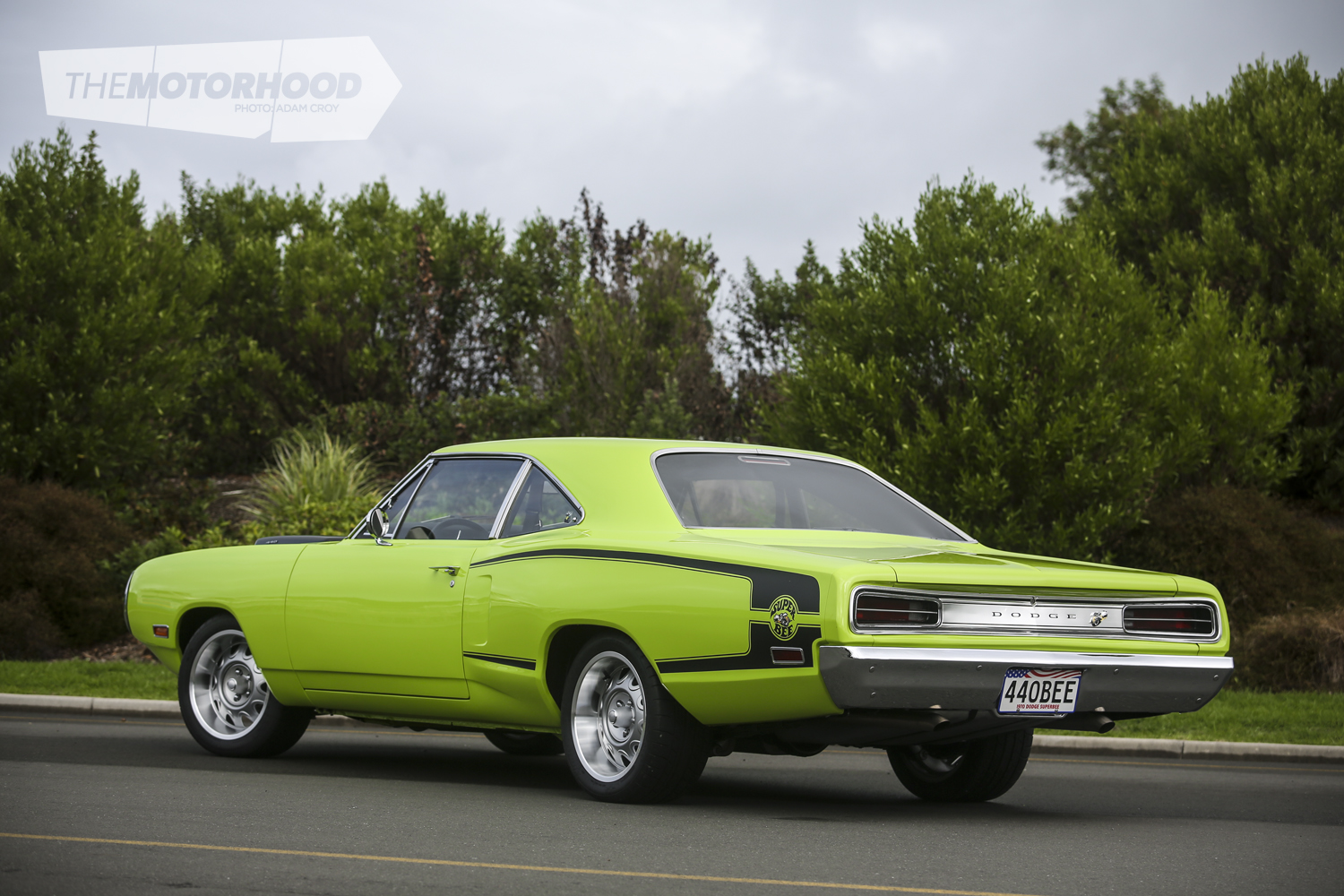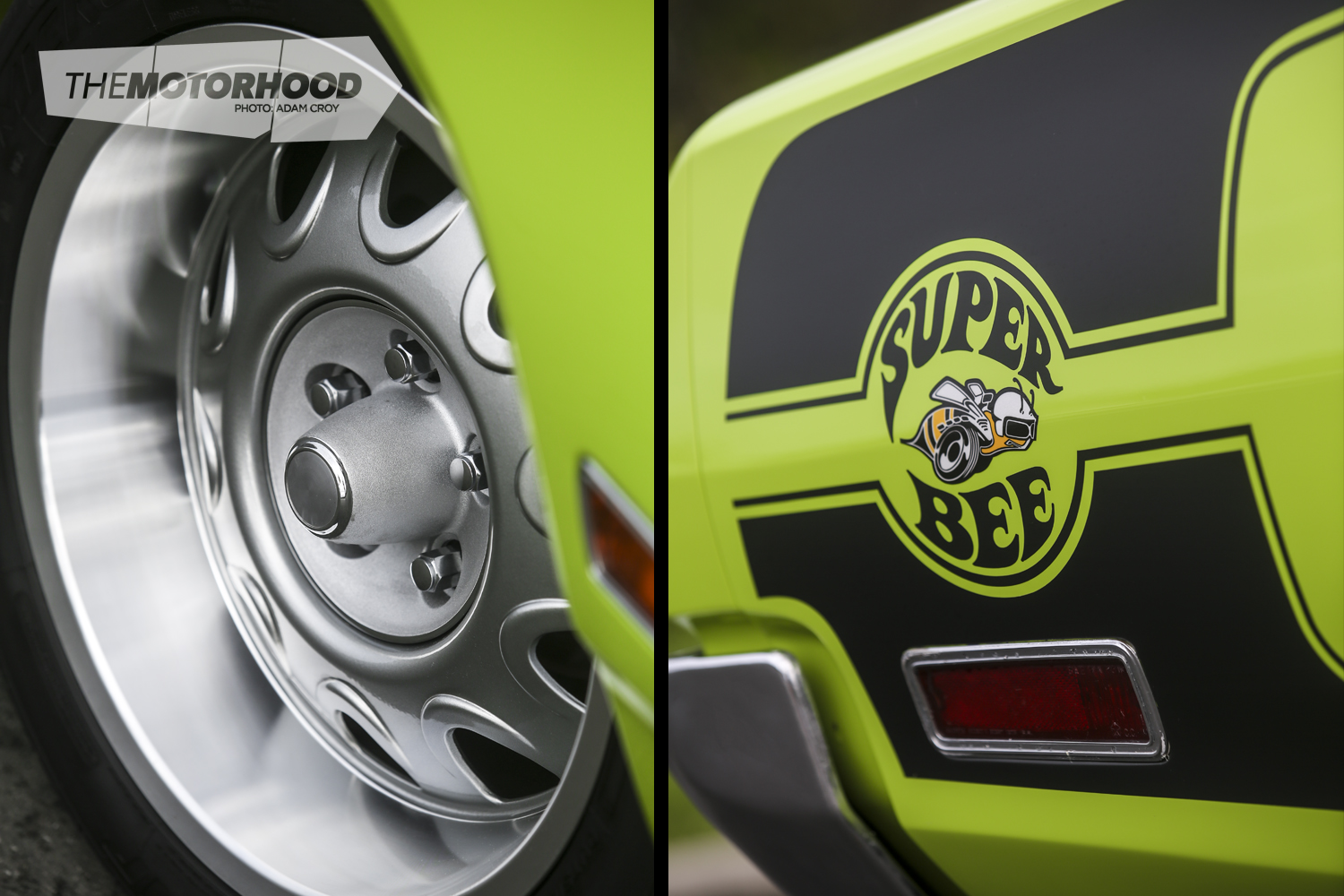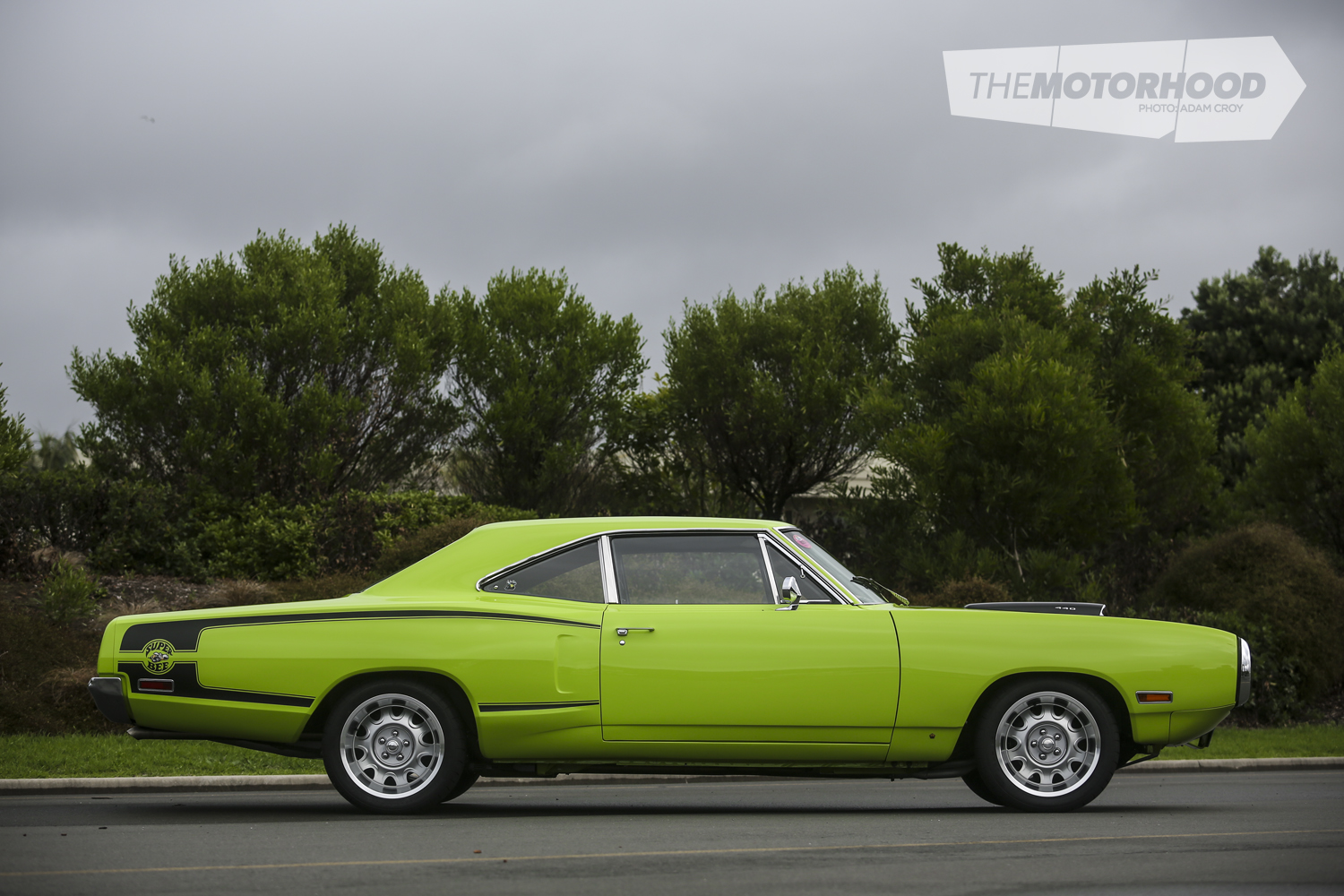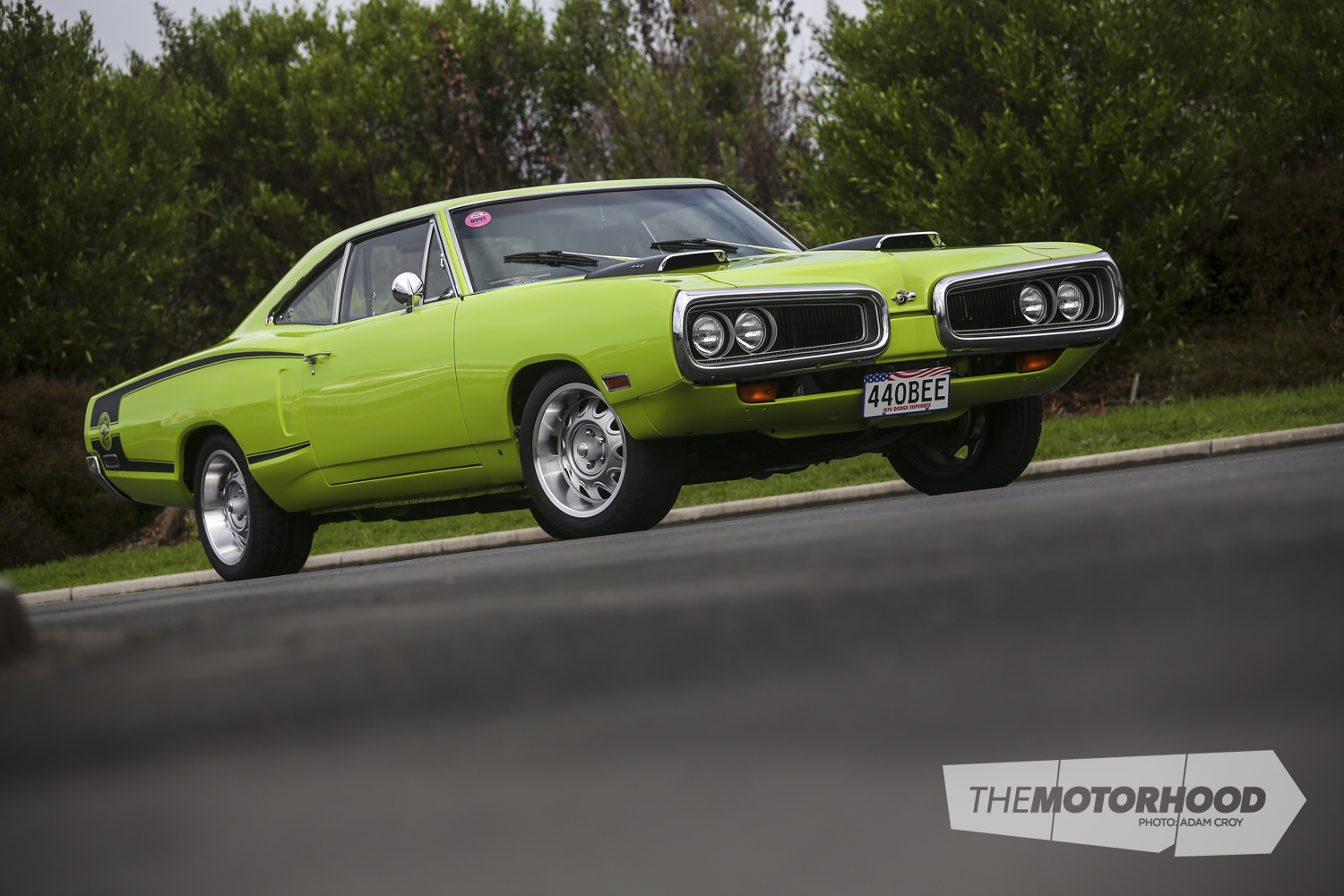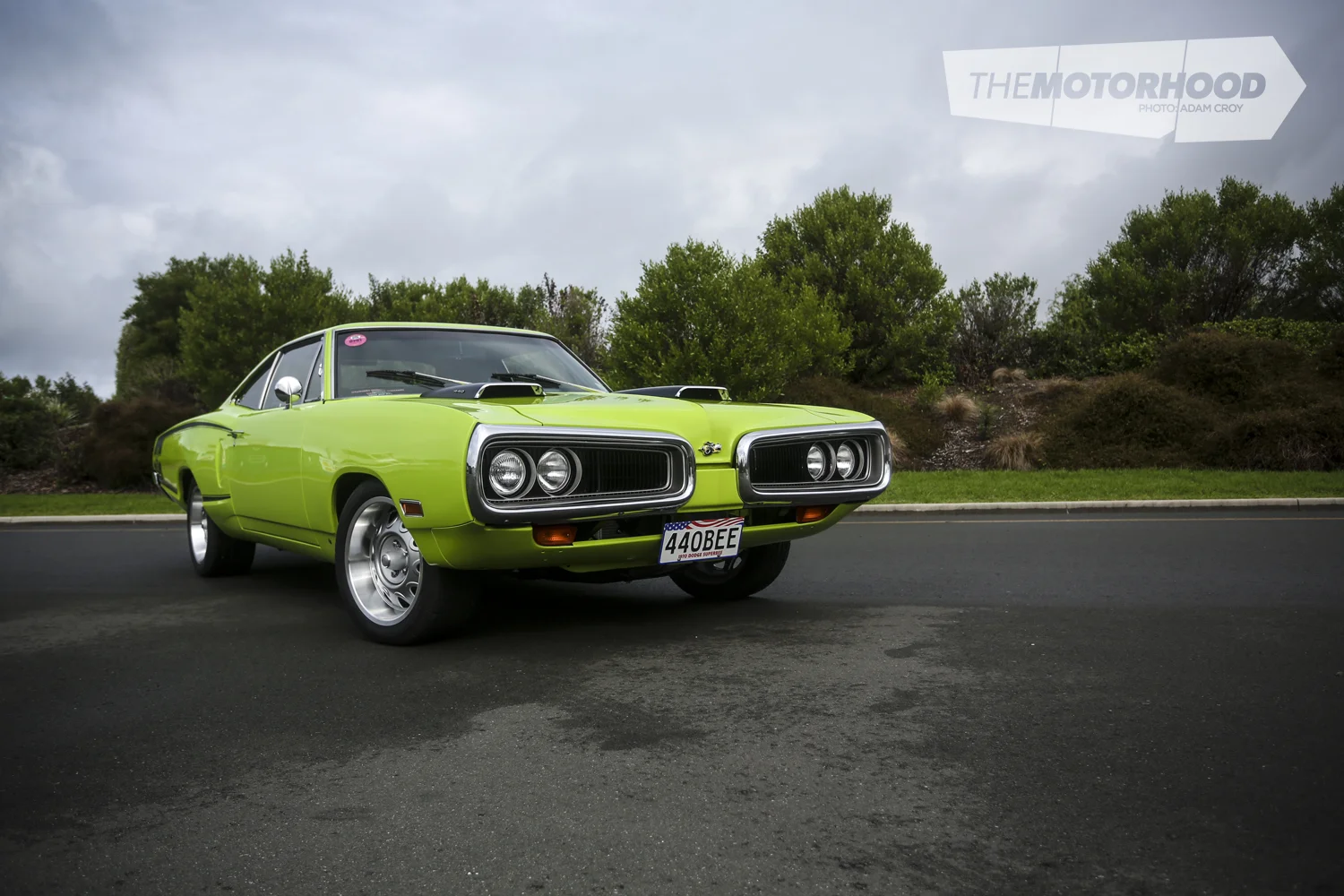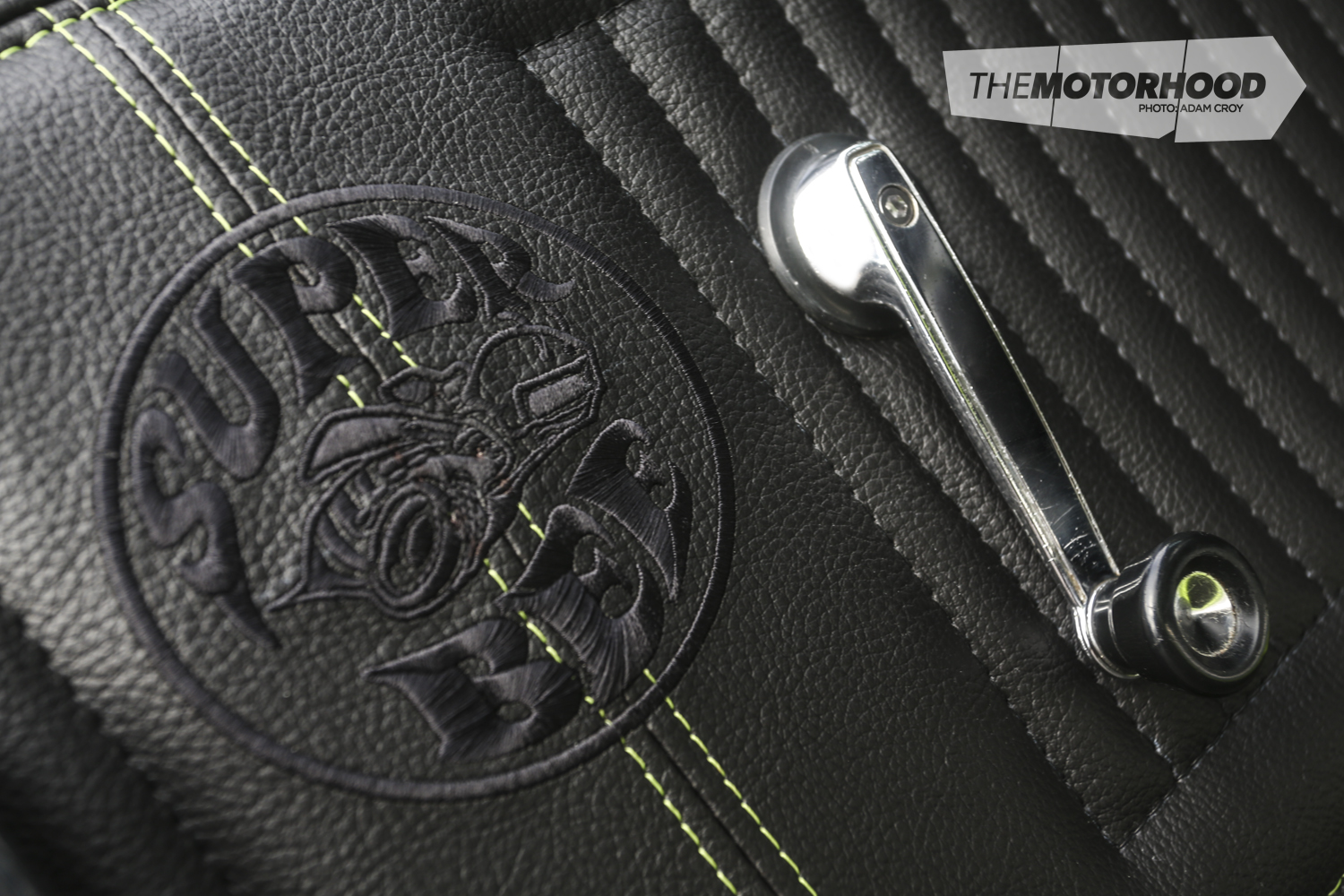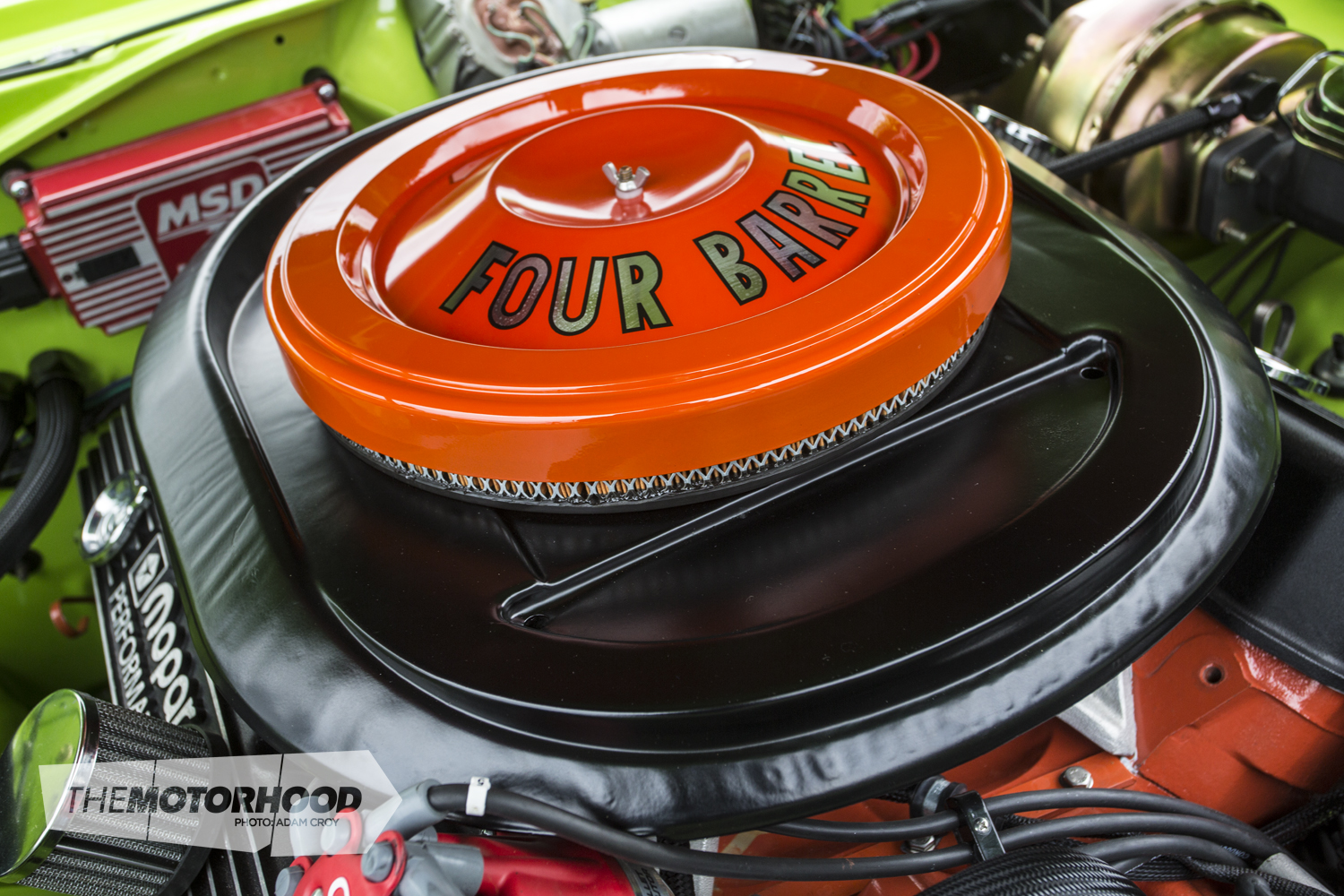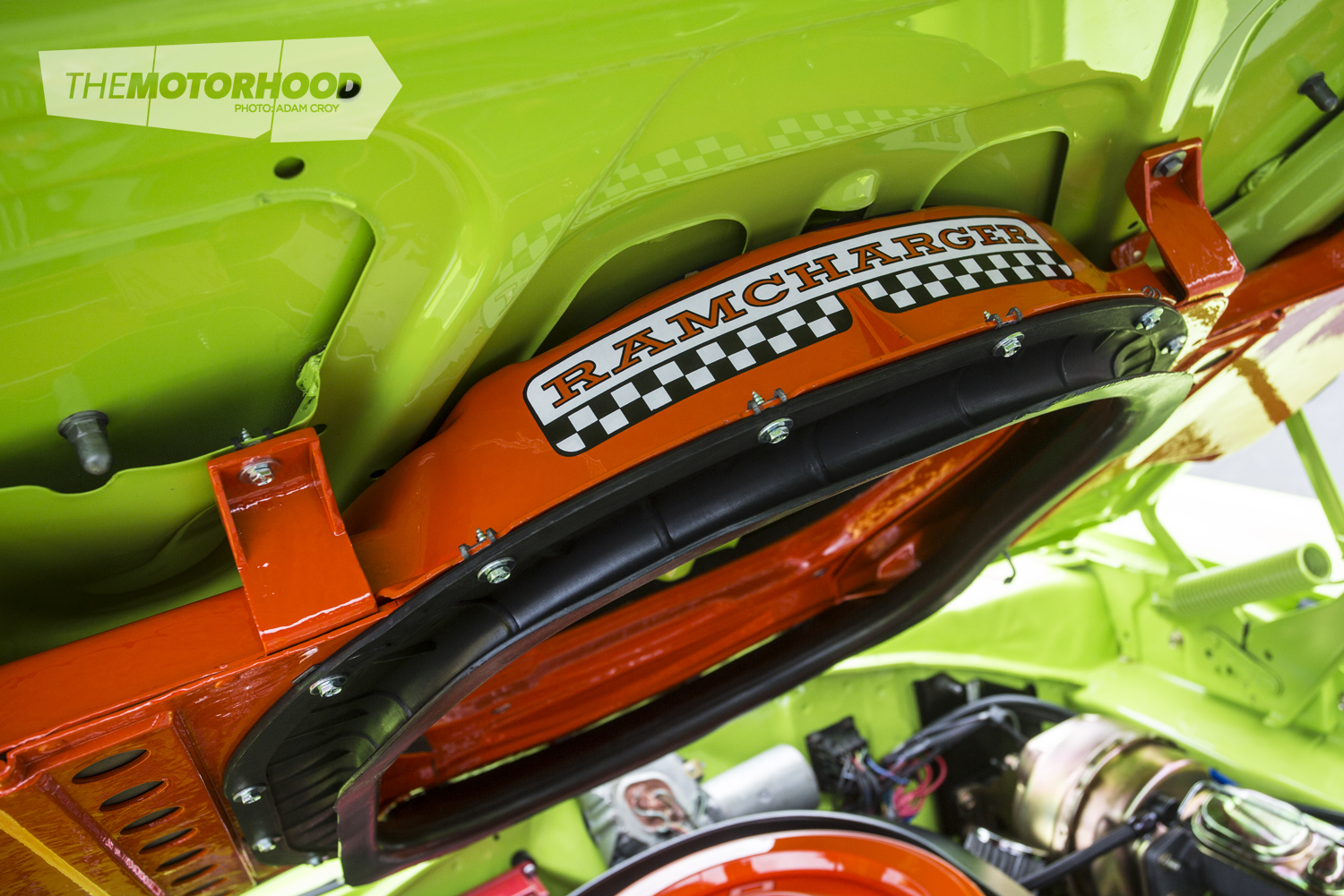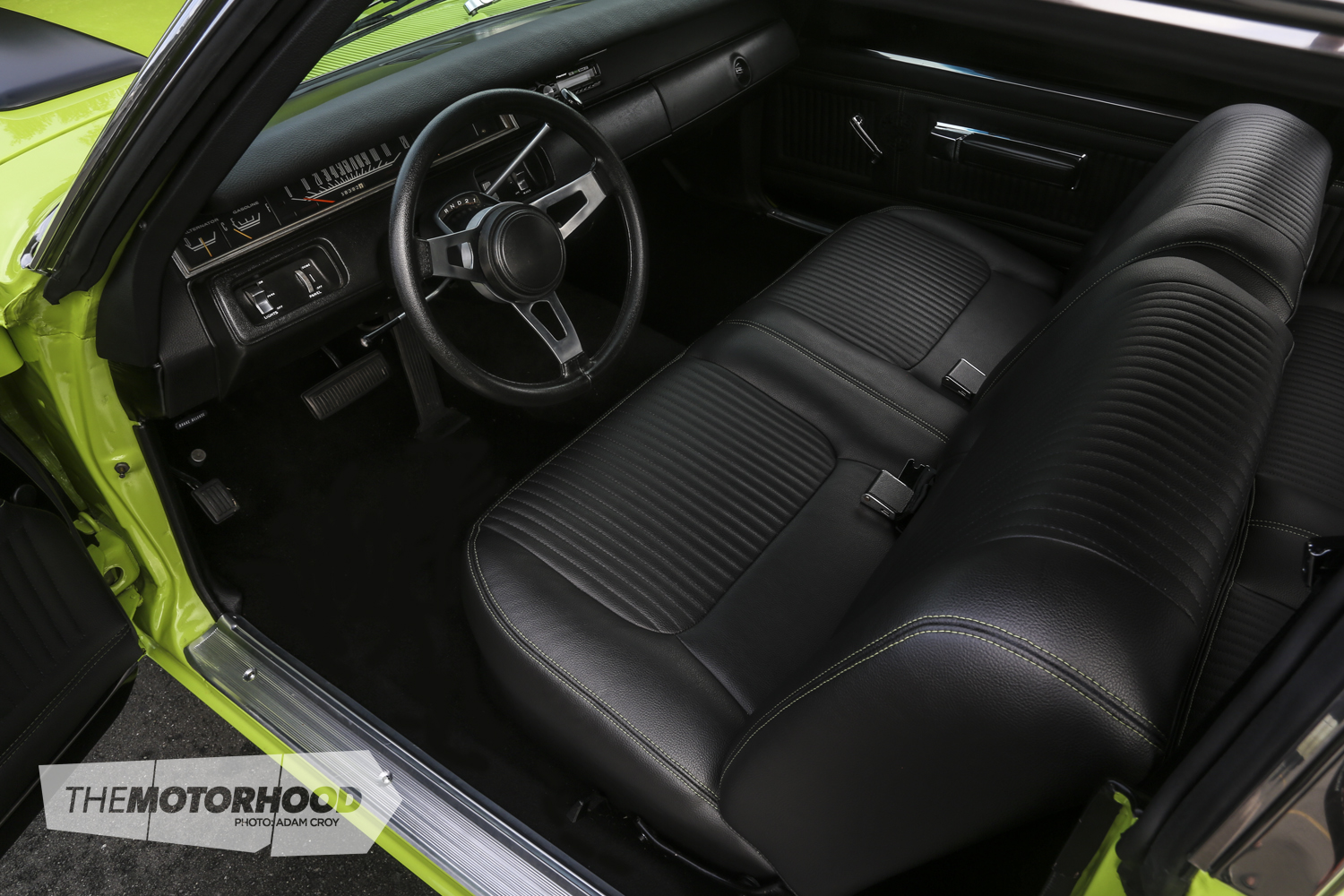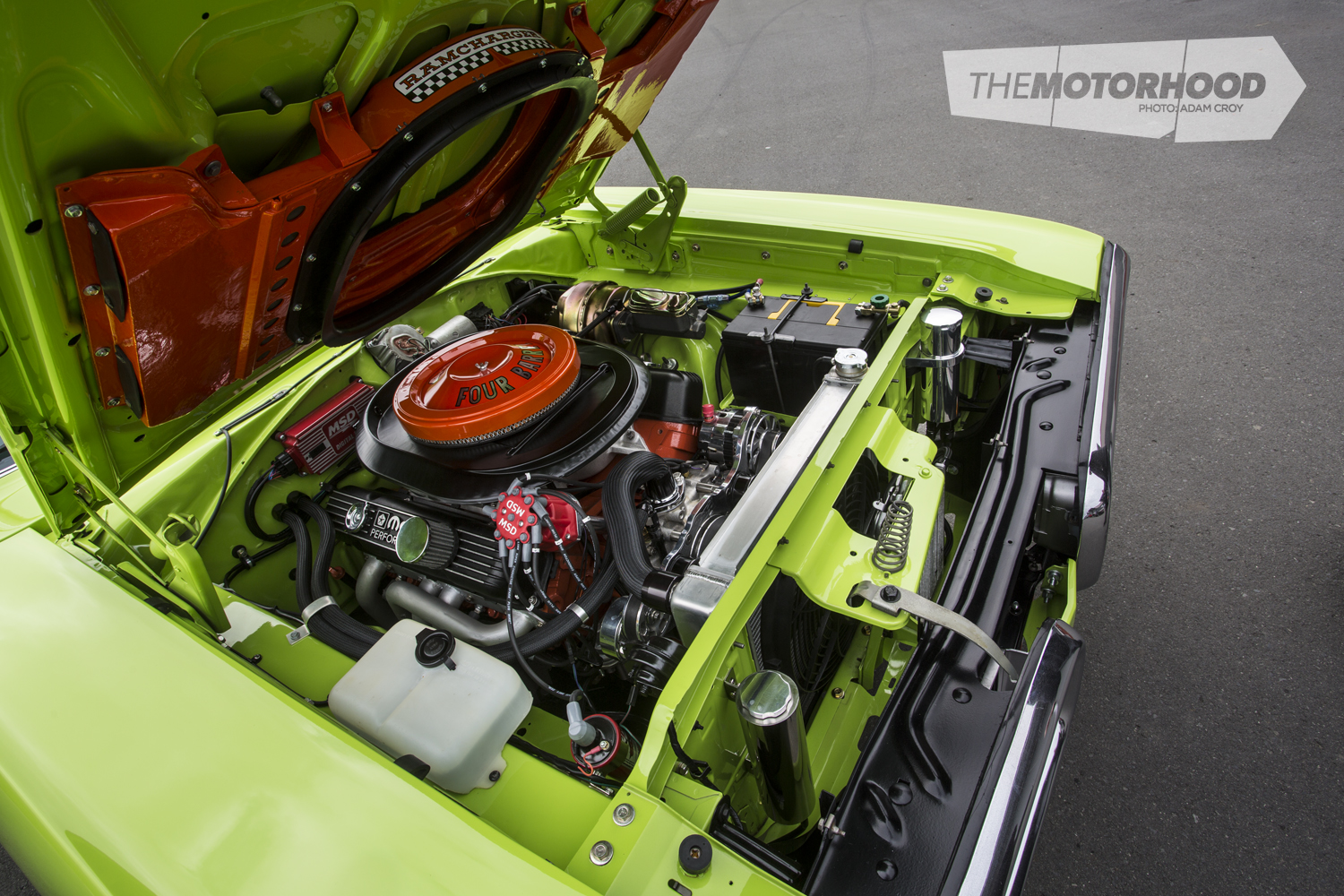data-animation-override>
“Jason and Tarina Moorfield’s Dodge Super Bee is a veritable globetrotter, but now it has waved goodbye to the Scandinavian way of life to settle in New Zealand”
It’s funny how unpredictable the history of a car can be — especially one that has been restored to a show-quality level. Looking at the immaculate Super Bee photographed in this feature story, you’d probably put an educated guess at it having its roots firmly in the USA. While that’s strictly true, given its Mopar lineage, this particular example actually has a history in an opposite part of the globe.

The 1970 Dodge Super Bee started life as a 318-powered, relatively low-spec car. The car was purchased by a retired Swedish accountant, who shipped it back home to Sweden in a container. At some point in its European life — in 1985, to be exact — the Super Bee came dangerously close to becoming a full-blown drag car, but for reasons unknown, it was reverted back to street trim.

Thanks to the internet, we’re living in an age where we are able to keep track of, and appreciate, overseas car culture from the comfort of our own computers. What have we learned from this? Quite a lot, including the information that the Swedes build some of the coolest cars in the world. Had this Super Bee become a fully fledged drag car, there’s little doubt it would have been amazing, but we’re glad it didn’t — while the Swedes would have gained one seriously cool drag car, our Kiwi roads would be down by one seriously cool old Mopar street car.
In 1987, the car changed hands, this time to one Kjell Bjork, who shipped it over to New Zealand in 2001. It was never registered — not that something so trivial would deter Kjell from cruising around the country in it.

So, where do the car’s current owners, Jason and Tarina Moorfield, come into the picture? They’re proprietors of Te Kauwhata–based Moorfield Motors, and Jason crossed paths with the Super Bee a few years ago when transporting the car to Kjell’s new home in Hamilton. After they’d been talking for a while, Kjell revealed that he might need to put the vehicle up for sale. Well, one thing led to the next, and Jason was pointed in the direction of widely acclaimed Mopar guru, Rodney Holland, from Rodney’s Restorations, to seek advice. It didn’t take much for Rodney to convince Jason that the deal was a good one, and the Moorfields were soon the new owners of one Dodge Super Bee.
No sooner had the car been acquired than it was placed under the knife, being stripped right back to a bare shell. The Super Bee was brought to Johnos Body Shop, where Johno worked his magic over six months, perfecting the body. From there, it was shifted a literal hop, skip, and jump away to Rodney’s shop, where it would spend a further six months.

Structurally, the car could have been in much worse condition. The worst parts were the lower rear three-quarter panels, for which replacement patch panels were ordered. These patch panels ended up being the full rear three-quarter panels, which were grafted in and now look a million bucks.
Jason worked two days a week, and any spare weekends, at Rodney’s to finish the car, and Rodney had it painted in the factory Sublime (J5 paint code) colour just before Christmas 2014.
“It was an exciting moment for me to have it in our workshop, just two days before Christmas,” Jason says.

Just as the car’s aesthetics were benefiting from a tidy-up, so too would the engine bay. The old 318 that originally powered the car is long gone. In its place sits a warmed-up 440ci big block that does a more than adequate job of moving the big car along. Being a mechanic by trade, Jason is more than up to the task of building an engine, and has assembled a stout combo here.
Don’t be fooled by the fact that the block and heads are stock — 440 reconditioned cubes makes for a tough bit of kit. An Edelbrock Performer 440 RPM intake manifold and Holley 670cfm carburettor deliver strong, usable power without hammering the old wallet too hard at every petrol station. The ignition system is all MSD — from the billet distributor to the Blaster 2 coil and Digital 6AL rev limiter — keeping everything reliable. Up front, the very trick serpentine belt drive system looks and performs far better than the factory arrangement ever did.

The factory three-speed TorqueFlite 727 transmission has been retained, and makes for a great cruising gearbox that is more than happy to put the power to the ground when required. The factory 8¾-inch Dana diff is also more than up to this task, and the 3.55:1 ratio Sure Grip LSD helps strike an excellent compromise between acceleration and cruising comfort, as well as putting the power down whenever it needs to. This is helped by grippy Mickey Thompson rubber that’s significantly chunkier than what the car wore when it left the Chrysler production line. The timeless looks have been retained, thanks to the 17-inch YearOne wheels, which offer a modern take on the traditional Mopar Rallye-style wheels.
Not everything on the underside was as durable as the driveline, though. The road-holding characteristics that were acceptable in the ’70s leave a lot to be desired in 2015, especially when you’ve got 440 cubes of Mopar muscle under your right foot. Though the Super Bee retains the factory torsion bar suspension, the torsion bars, springs, and shocks have been replaced with beefed-up items, and the car now rides and handles the way it always should have.

The smooth — and far from boat-like — ride quality is complemented by an interior that, while still in the unmistakable style of the ’60s–’70s, has been finished by Waikato Motor Trimmer to a level rivalling many modern cars fresh off the production line. You can’t go wrong with black, and that’s reflected here, with black leather, vinyl, and carpet uniting to create a demure environment.

Just as the modern Rallye-style wheels lend the exterior a subtle modern flavour, so the Mopar ‘Tuff’ tri-spoke steering wheel, Pioneer stereo, and Auto Meter oil pressure gauge unobtrusively bring a touch of modernity to the cabin. This is reinforced when you catch sight of subtle features such as the custom Super Bee emblems embroidered on the door cards and the lime-green stitching that brings a hint of that Sublime exterior inside.

We first caught sight of this car at Repco Beach Hop 15, and it ended up parked right outside the Meguiar’s tent at Onemana — not a bad endorsement at all, and a real testament to the magical abilities of both Rodney and Johno. However, the likelihood of that Beach Hop adventure was pretty up in the air beforehand: the Super Bee was VINed only the week before, with only the front bench seat in at the time. However, the team at Waikato Motor Trimmer came through, and the car was 100 per cent complete before the week was up — talk about cutting it fine!

Unfortunately, that week would prove to be a busy one for Jason, as the freshly assembled 440 dropped its oil pressure abruptly, destroying itself in the process. Not one to let a blown engine dash his plans of making it to Beach Hop, Jason rebuilt the engine and began to run it in on the way down to Whangamata. In fact, at the time of the photo shoot, the engine was still being run in, though it’s exhibiting no sign of dodgy oil pressure readings this time around.

That’s a comforting fact for Jason and Tarina, who now know that their car has been built as well as it could ever have been. It also happens to be drivable enough to cruise wherever they want, roomy enough for the whole family, and immaculate enough to steal the show wherever they go. Whoever said you can’t have your cake and eat it clearly hasn’t met the Moorfields!
1970 Dodge Super Bee
- Engine: 440ci big block Mopar, 0.060-inch overbore, 9.5:1 compression ratio, factory cylinder heads, mild cam, Holley 670cfm carburettor, Edelbrock Performer RPM intake manifold, Ram Charger air box, MSD 6AL ignition, MSD billet distributor, MSD Blaster 2 coil, custom headers, 2½-inch twin stainless exhaust, Flowmaster mufflers, alloy radiator, electric fan
- Driveline: Dodge 727 three-speed auto, Dodge 8¾-inch Sure Grip LSD diff, 3.55:1 final drive
- Suspension: heavy-duty torsion bars (front), heavy-duty leaf springs (rear), KYB shocks
- Brakes: standard booster, standard calipers and rotors, standard drums
- Wheels/Tyres: 17×8-inch and 17×9-inch YearOne Mopar Rallye-style wheels, 245/45R17 and 275/45R17 Mickey Thompson E Street tyres
- Exterior: Spies Hecker Sublime (factory J5)
- Interior: factory ‘Tuff’ steering wheel, standard gauges, reupholstered bench seats, recovered panels, Pioneer head unit, Pioneer 6×9-inch speakers, Pioneer amp, Pioneer 12-inch sub
This article was originally published in NZV8 Issue No. 123. You can pick up a print copy or a digital copy of the magazine below:






